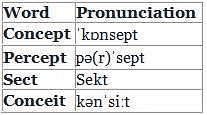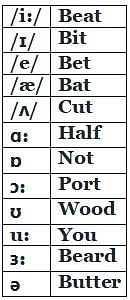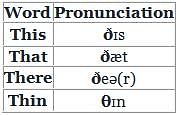Class 1 Exam > Class 1 Tests > English Grammar for Junior Classes > Test: Vowels and Consonants - 2 - Class 1 MCQ
Test: Vowels and Consonants - 2 - Class 1 MCQ
Test Description
10 Questions MCQ Test English Grammar for Junior Classes - Test: Vowels and Consonants - 2
Test: Vowels and Consonants - 2 for Class 1 2024 is part of English Grammar for Junior Classes preparation. The Test: Vowels and Consonants - 2 questions and answers have been
prepared according to the Class 1 exam syllabus.The Test: Vowels and Consonants - 2 MCQs are made for Class 1 2024 Exam. Find important
definitions, questions, notes, meanings, examples, exercises, MCQs and online tests for Test: Vowels and Consonants - 2 below.
Solutions of Test: Vowels and Consonants - 2 questions in English are available as part of our English Grammar for Junior Classes for Class 1 & Test: Vowels and Consonants - 2 solutions in
Hindi for English Grammar for Junior Classes course. Download more important topics, notes, lectures and mock
test series for Class 1 Exam by signing up for free. Attempt Test: Vowels and Consonants - 2 | 10 questions in 20 minutes | Mock test for Class 1 preparation | Free important questions MCQ to study English Grammar for Junior Classes for Class 1 Exam | Download free PDF with solutions
Test: Vowels and Consonants - 2 - Question 1
Which of the following approach is based on letters and sounds?
Detailed Solution for Test: Vowels and Consonants - 2 - Question 1
Test: Vowels and Consonants - 2 - Question 2
In order to know the correct pronunciation of English words, the learner should
Detailed Solution for Test: Vowels and Consonants - 2 - Question 2
| 1 Crore+ students have signed up on EduRev. Have you? Download the App |
Test: Vowels and Consonants - 2 - Question 3
The acceptable sound combinations of a language are specified in its _____ rules.
Detailed Solution for Test: Vowels and Consonants - 2 - Question 3
Test: Vowels and Consonants - 2 - Question 4
The one that cannot be further divided into smaller grammatically meaningful components is ______.
Detailed Solution for Test: Vowels and Consonants - 2 - Question 4
Test: Vowels and Consonants - 2 - Question 5
The component of language referring to rules governing the structure and sequence of speed of sounds:
Detailed Solution for Test: Vowels and Consonants - 2 - Question 5
Detailed Solution for Test: Vowels and Consonants - 2 - Question 6
Test: Vowels and Consonants - 2 - Question 7
In different languages, the number of consonants vary from 8-10 to ______.
Detailed Solution for Test: Vowels and Consonants - 2 - Question 7
Test: Vowels and Consonants - 2 - Question 8
Identify the word in which the end sound is different from the other words.
Detailed Solution for Test: Vowels and Consonants - 2 - Question 8
Detailed Solution for Test: Vowels and Consonants - 2 - Question 9
Test: Vowels and Consonants - 2 - Question 10
In which one of the following words do the letters 'th' have a different sound (underlined)
Detailed Solution for Test: Vowels and Consonants - 2 - Question 10
|
18 videos|170 docs|35 tests
|
Information about Test: Vowels and Consonants - 2 Page
In this test you can find the Exam questions for Test: Vowels and Consonants - 2 solved & explained in the simplest way possible.
Besides giving Questions and answers for Test: Vowels and Consonants - 2, EduRev gives you an ample number of Online tests for practice
|
18 videos|170 docs|35 tests
|
Download as PDF




















